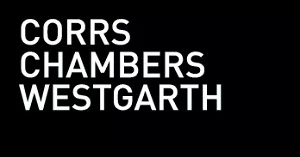- within Tax topic(s)
- with readers working within the Accounting & Consultancy and Telecomms industries
- within Technology, Media, Telecoms, IT, Entertainment and Real Estate and Construction topic(s)
- with Senior Company Executives, HR and Finance and Tax Executives
The ATO has published its finalised guidance on the third party debt test (TPDT) in Taxation Ruling TR 2025/2 and the finalised Schedule 3 of Practical Compliance Guideline PCG 2025/2.
On 1 October 2025, the ATO published its finalised guidance on the third party debt test (TPDT) inTaxation Ruling TR 2025/2 and the finalised Schedule 3 of Practical Compliance Guideline PCG 2025/2. This finalised guidance comes after the ATO considered stakeholder feedback following the draft TPDT guidance in Draft Taxation Ruling TR 2024/D3 and Draft Practical Compliance Guideline PCG 2024/D3, which were released on 4 December 2024.
The ATO's guidance provides finality on its views on certain aspects of the TPDT. However, aspects of the ATO's interpretations in the draft guidance relating to critical terms and concepts, like interest rate swaps, credit support rights and commercial activities in connection with Australia, remain largely unchanged. This is despite the ATO receiving extensive stakeholder feedback on these issues and their implications for existing and future investments more broadly. Therefore, some fundamental areas of concern remain.
Greater clarity in some aspects of the third party debt test
The ATO has provided greater clarity on its interpretation of the meaning of 'Australian assets'. It specifically states that tangible assets will be Australian assets when they are physically situated in Australia, or are being physically transported to Australia for use in Australian operations. In relation to intangible assets (other than membership interests in an entity), the ATO does not provide any bright-line tests, but rather lists a series of factors to take into account in determining whether those assets are 'Australian assets'. Whilst this is a step in the right direction, there remains some uncertainty as to whether certain intangible assets are Australian assets. By way of example, there is no guidance on whether a foreign bank account operated by an Australian entity can be an 'Australian asset'. However, the former Example 22 in the Draft PCG 2024/D3 was removed.
Ambiguity around the interpretation of certain terms and concepts
Interest rate swaps and on-swaps
The ATO maintains its view that costs on internal interest rate swaps, or on-swaps that are back-to-back with an external swap, that are paid to an associate entity do not satisfy s 820-427A(2)(b), as illustrated in Example 1 in TR 2025/2.
This contrasts with the ATO's position in Example 37 of PCG 2025/2. There the ATO describes a conduit financing restructure as one that it would generally not apply compliance resources to review where a back-to-back internal swap is closed out and the terms of the on-lent debt are amended so that interest expenditure on the on-loan is equal to what the payments would have been under the on-lent debt and back-to-back internal swap. This is despite the restructure achieving the same economic outcomes as those under the on-swap arrangement outlined in Example 1 of TR 2025/2. It is also understood that the intention of Example 37 in PCG 2025/2 is that any swap gain or loss on close out of those arrangements can be notionally disregarded, with compliance resources not being applied to this matter. However, careful consideration should be given to the applicability of the example to each taxpayer's facts and circumstances and whether sufficient comfort can be taken from a PCG.
The ATO has added footnote 26 at the end of Example 1, which is expressed as intending to limit the scope and application of Example 1. The Compendium to TR 2025/2 suggests that the footnote means that Example 1 is not intended to provide guidance on whether the on-loan itself satisfies the TPDT conditions or the conduit financing conditions. However, the Compendium also confirms that '[t]he final Ruling clarifies that the relevant debt deductions [under the on-swap] do not satisfy paragraph 820-427A(2)(b), even if those debt deductions are 'passed-on' to an entity that is not an associate entity of Project Trust.'
The ATO also acknowledged submissions seeking to clarify whether 'debt deductions' arise under a cross-currency interest rate swap, but declined to address this issue in TR 2025/2. Such swaps are common for many taxpayers who are general class investors relying on third party debt. The ATO appears to provide no comfort that it will address this interpretational issue through other means - meaning uncertainty on this topic may persist.
Credit support rights
The ATO's approach to equity commitment deeds and other forms of parental support remains largely unchanged. This may present ongoing challenges, especially for infrastructure groups that rely on the TPDT.
For example, the ATO's view is that equity commitment deeds and similar parental support rights may be impermissible recourse rights if, for example, they are provided by a foreign associate entity, as illustrated in Example 22 of TR 2025/2.
This would mean that foreign sponsors would not be able to provide parental support for a new greenfield infrastructure project. However, it is commercial practice for lenders to require some form of guarantee until various development and/ or operational milestones are met. If instead equity is used, and there is an ability to borrow later when the project is built and can support unsecured lending, borrowing to repay the equity advanced by a sponsor could also be interpreted as impermissible. This presents challenges for foreign sponsors wanting to invest in Australian infrastructure projects that are funded with third party debt. This may impact on Australia's attractiveness as a destination for foreign capital.
The ATO has also asserted its view that credit support rights are 'unlikely to ever be minor or insignificant assets'. In this regard, the ATO did not address various submissions seeking to align the ATO's view on 'minor or insignificant' with the ordinary meaning of those words. It also suggests that this exception would be unlikely to apply in this context. Whilst the ATO has not provided any clarity as to the 'unlikely' circumstances in which credit support rights may be considered minor or insignificant, this possibility still exists. One might expect this to arise only in exceptional circumstances, such as where, for example, credit support rights previously existed but have since been fully discharged.
The ATO has also impliedly introduced performance guarantees as a form of recourse right via Example 19. This may be considered a contestable position, given it raises questions around how this could practically provide relevant recourse for the lender. For instance, a related party performance guarantee relating to assets outside of the borrower's obligor group or to an offshore sponsor may in practice be unlikely to be open to a lender to access in satisfaction of payment of a debt of the borrower, yet appears to fall foul of the TPDT under the ATO's view.
Commercial activities in connection with Australia
The ATO continues to take the view that the use of borrowed funds to pay distributions such as dividends, trust distributions or returns of capital is not a 'commercial activity'. Therefore, funds borrowed to pay such distributions would breach the TPDT. The ATO says that 'these are appropriations of profit or equity'. There is no further guidance though around how the payment of distributions can be regarded as a non-commercial activity.
However, the ATO has removed the concept of 'capital management activities' from the finalised TR 2025/2. It states that the use of borrowed funds to refinance debt that were used to fund commercial activities in connection with Australia is permitted under the 'commercial activities in connection with Australia' condition. This is a welcome clarification, as the ATO's former position on 'capital management activities' lacked clarity around whether refinancing existing debt used for a permitted purpose would fail the 'commercial activities in connection with Australia' condition.
In Schedule 3 to PCG 2025/2, at Example 34, the ATO provides guidance on the repayment of externally borrowed funds that have historically been used partially to fund annual trust distributions. The ATO states that it will not devote compliance resources where the taxpayer has conducted a tracing exercise to determine the proportion of debt facilities used to fund a distribution, and where the relevant portion of debt facilities are repaid prior to 1 January 2027 in the manner described in Example 34. However, Example 34 contains a rare fact pattern: specifically, where the relevant proportion of facilities used to fund a distribution does not exceed 10% of the available balance of the facility and an amount equal to the distributions is repaid out of revenue from an Australian business. It is not clear whether this '10%' ratio will be applied as a strict threshold by the Commissioner when administering the PCG. Overall, in the context of an interpretation of the law that remains somewhat contentious, the Commissioner only offers a narrow pathway for taxpayers to restructure their affairs.
Australian assets
The ATO provided some further detail regarding the meaning of 'Australian assets.' However, if the asset is a membership interest in an entity, the ATO now states that membership interest must be in an Australian entity as a prerequisite to being an Australian asset (i.e. ruling out any possibility that foreign entities are Australian assets in the view of the ATO).
However, the analysis does not end here. A membership interest in an Australian entity will not be an Australian asset where any underlying assets (including those held by interposed entities) are not themselves Australian assets. There is an exception for foreign assets that are minor or insignificant (new Example 12), but the ATO has introduced an exclusion for that exception where the membership interests are in an Australian entity that holds minor or insignificant foreign assets (new Example 13). It is not clear (either from the perspective of the guidance or broader policy) why Example 12 is stated to be permissible recourse, only to ultimately fail the TPDT in Example 13.
Consistent with the above, the ATO maintains the view that shares in Australian entities with foreign permanent establishments do not qualify as 'Australian assets' (Example 15).
Conduit financing rules
The ATO did not address this key element of the TPDT within TR 2025/2. However, these rules commonly feature in group debt arrangements involving the use of a Finco in non-consolidated groups. There is now also an asymmetry in guidance given PCG 2025/2 addresses the conduit financing rules. The ATO has flagged the application of the conduit financing conditions, including the restrictions on the 'same terms' requirements (for example, 'passing through' swap costs and bundling external loans) as a topic which may be addressed in future public advice and guidance (PAG). It is unclear when or if such guidance will be released, whether other aspects of the conduit financing rules will be addressed, or to what extent, if at all, it will relate to issues implicitly raised but left unresolved by TR 2025/2.
Ongoing practical issues for taxpayers
Ultimately, the finalised view of the ATO on key interpretational issues of the TPDT underscores its intention to steadfastly apply these rules narrowly. The TPDT, which was designed as a concessional measure for taxpayers in the infrastructure and property sectors, will continue to pose practical issues for such taxpayers seeking to rely on this test. Taxpayers will need to proceed with heightened caution, having to examine both new and existing debt arrangements against the stringent rules for applying the TPDT.
Over time, it is hoped that further clarity will be forthcoming through other avenues. Some of this has recently been provided by PCG 2025/2 in the context of restructures. More may follow from the ATO's release of other PAG topics. The ATO flagged the possibility of guidance on TPDT key concepts covering eligibility for the credit support concession for certain development assets (in addition to the conduit financing rules, as noted above). However, it has not committed to providing such guidance - it is not clear when, or if, guidance will be published on all or indeed any of these topics.
As it stands, we expect some of the key interpretational issues ultimately to now be resolved through legislative amendment or the dispute process.
PCG 2025/2 - in detail
PCG 2025/2 outlines the ATO's compliance approach on the application of certain anti-avoidance provisions to restructuring in response to the new:
- thin capitalisation rules, and
- the debt deduction creation rules (DDCR).
It provides a risk assessment framework which applies to restructures entered into on or after 22 June 2023 in response to the DDCR and the thin capitalisation rules. The framework's application is explained by way of examples in Schedules 2 and 4. The risk assessment framework does not apply if no restructure is undertaken (i.e. it does not apply to Schedules 1 and 3; however, those Schedules are framed as a guide on when compliance resources will be dedicated to a particular fact pattern).
PCG 2025/2 also provides further guidance on where the DDCR will need to be considered through Schedule 1, and the ATO's compliance approach in relation to the TPDT, under Schedule 3.
Schedules 3 and 4 of PCG 2025/2 should be read in conjunction with Taxation Ruling TR 2025/2, as explained above.
Whilst helpful, the examples provided in PCG 2025/2 are simple and binary in nature. We expect that it will be rare that these exact examples will occur in practice, with taxpayers being left to make an assessment of how analogous their situation is to each example.
Summary of Schedule 3
Schedule 3, being the most recent release, will be the focus of the following section. The remainder of PCG 2025/2 will then be explained.
Schedule 3 provides targeted compliance approaches for taxpayers seeking to comply with the following aspects of the TPDT:
- paragraph 820-427A(3)(c) with respect to restructuring to remove recourse for payment of a debt to assets that are not Australian assets and whether assets are considered 'minor or insignificant';
- paragraph 820-427A(3)(d) with respect to certain distributions and whether a debt facility is used by the borrowing entity to fund its commercial activities in connection with Australia; and
- paragraph 820-427C(1)(d) with respect to restructuring to comply with the conduit financing conditions.
Notably, consideration of paragraphs 820-427A(3)(d), 820-427A(4)(b), and 820-427A(5) was added to the Schedule from the draft PCG 2024/D3.
The compliance approaches provided for by Schedule 3 in relation to paragraphs:
- 820-427A(3)(c) regarding recourse; and
- 820-427C(1)(d) regarding conduit financing
are limited to restructures undertaken between 22 June 2023 and 1 January 2027.
Whereas the compliance approaches provided for in relation to paragraphs:
- 820-427A(3)(c) and 820-427A(4)(b) regarding minor or insignificant assets; and
- 820-427A(3)(d) regarding commercial activities in connection with Australia
are limited to income years starting on or after 1 July 2023 and ending on or before 1 January 2027.
Schedule 3 in detail
Recourse
The ATO has not amended the examples on restructuring to remove recourse to foreign assets from the obligor group (Examples 29 and 30). In our experience, these sorts of restructures regularly take place to correct arrangements that contravene the TPDT recourse conditions. It is therefore appropriate that the ATO has not deviated from the examples provided in the draft Schedule 3 in PCG 2024/D3.
In response to stakeholders' request for a compliance approach relating to credit support rights and subsection 820-427A(5), Schedule 3 now includes Example 31. Example 31 provides that the ATO will allow taxpayers to amend the terms of their arrangements to verify that credit support only relates to the development phase. This will be comforting for taxpayers who have established debt arrangements for projects with various phases, some of which may comply with the carve out of subsection 820-427A(5)(a)(iii) and some which may not. We expect this example to be of particular relevance as it is a fairly common issue for projects documented prior to the enactment of these rules.
Minor or insignificant assets
Whilst Example 33 regarding the compliance approach for small asset holding and subsection 820-427A(4) is new, it is of limited usefulness as it is consistent with the previous examples of amending recourse.
Commercial activities in connection with Australia
The ATO's interpretation about trust distributions failing the commercial activities test was generally a surprise to many taxpayers. As such, the ATO has included the new Example 34 to clarify when arrangements may be altered to comply with the ATO's interpretation of the rules.
Example 34 describes a Trust that has a debt facility with an unrelated third-party:
- The Trust, prior to and during the compliance period, uses the debt facility for the payment of annual trust distributions.
- The Trust, prior to and during the compliance period, makes repayments towards the debt facility out of the revenues from its Australian business that equal or exceed the total of its annual trust distributions.
- Before the compliance period ends, the Trust amends its governance documents and procedures and no longer pays distributions using the debt facility.
Although the ATO has offered a pathway to compliance, it could be considered narrow, appearing to apply a 10% threshold to the amount of debt facility that was used to pay distributions. Taxpayers may now be expected to repay any debt that was used for payment of distributions from their Australian business. We expect this to be of limited practical utility to taxpayers in the infrastructure and property industries.
What is new in PCG 2025/2?
Throughout the remainder of PCG 2025/2, no substantial commentary was changed between the draft and final PCG 2025/2. Nonetheless, in response to concerns raised by stakeholders listed in the Compendium to PCG 2025/2, the ATO has provided additional examples and details on the application of thin capitalisation and DDCR, including additional sought after permissive guidance on types of low-risk restructures that taxpayers may wish to enter into following the new thin capitalisation rules.
Notable amendments include that:
- The 'white' risk zone was expanded to include restructures which have been reviewed in an audit or review and determined to be low risk or high assurance, and restructures in a year in which the de minimis exception applies.
- Additional examples have been provided in all four Schedules, which are explained in detail below.
The PCG 2025/2 makes clear that documentation and business records are crucial for taxpayers to evidence that DDCR does not apply, and new tracing and apportionment examples (Examples 15, 16 and 17) were inserted to show fair and reasonable methodologies of tracing and apportionment. However, it fails to provide prescriptive guidance on the nature of documentation required for taxpayers in order to determine the use of financial arrangements relevant to the operation of DDCR.
Further, whilst stakeholders requested the ATO to consider grandfathering historical transactions from the operation of DDCR, the ATO did not agree, and clarified PCG 2025/2 is intended to assist taxpayers to comply with the DDCR in its context as new law.
Scope and structure of PCG 2025/2
PCG 2025/2 defines 'restructure' to include any restructure or refinance, including any change, or reorganisation of group structure, business affairs or financial arrangements. It includes any part of a broader restructure or a restructure that is part-way through and yet to be completed.
The PCG is structured to contain:
- The main body - which sets out general principles of the ATO's risk approach and application of compliance resources.
- Schedule 1 - which covers examples where the DDCR will need to be considered.
- Schedule 2 - which covers the compliance risks arising from restructures in response to the DDCR.
- Schedule 3 - which covers the compliance approach for taxpayers seeking to comply with certain aspects of the TPDT.
- Schedule 4 - covers the compliance risks arising from restructures in response to the thin capitalisation rules.
Risk zones
The ATO adopts a relatively limited range of risk zones (compared to other frameworks that have been previously adopted, for example in PCG 2017/4). It aligns with the limited range of risk zones provided in other ATO guidance within the PAG program relating to thin capitalisation (see for example PCG 2025/D2). The Compendium shows a stakeholder request for PCG 2025/2 to provide further risk zones. However, the ATO considered this to be unhelpful given the recent enactment of the DDCR and the TPDT rules and the focus of PCG 2025/2 on providing permissive certainty of low-risk zones.
The risk zones range from:
- White - further risk assessment not required - applies to arrangements if the de minimis provision applies or where there is a settlement agreement, court decision or the ATO has already conducted a review.
- Yellow - compliance risk not assessed - applies to restructures not covered by examples in Schedules 2 and 4 of PCG 2025/2.
- Green - low-risk - applies to restructures covered by low-risk examples in Schedules 2 or 4.
- Red - high-risk - applies to restructures covered by high-risk examples in Schedules 2 or 4 or restructures that the ATO has already reviewed and provided a high-risk rating.
If, by following PCG 2025/2, the taxpayer understands their restructure to be low risk, the taxpayer can have confidence that the ATO will not have cause to allocate resources to intensive examinations beyond verifying their self-assessment. Whilst on the other hand, areas of higher compliance risk are likely to result in further and more intensive examinations, such as the commencement of a review or audit.
Schedule 1
Schedule 1 provides 17 examples to explain where the DDCR will need to be considered. This article will not go into detail on every example but instead focuses on the new examples added into the final PCG 2025/2.
The ATO added Example 3, funding capital expenditure with
related party debt, confirming that the ATO is unlikely to apply
compliance resources to determine the application of DDCR where a
borrower uses assessable income generated from its activities to
pay down interest-bearing debt (including interest and principal).
The example does not make clear whether it is appropriate for the
borrower to pay dividends while the interest-bearing debt is being
paid down.
Example 9, refinancing third party debt, is also new to PCG
2025/2. It provides that an Australian company will need to
consider the application of the DDCR to a related party loan which
is used to refinance third party debt facility. Despite the
four-year timing difference between the acquisition (Type 1,
acquisition case) and the refinancing, the ATO still expects the
taxpayer to trace the use of funds, and is likely to apply
compliance resources to determine the correct application of the
DDCR.
Tracing of funds and apportionment
The ATO has included three new examples (Examples 15, 16 and 17) in response to concerns raised in the Compendium requesting further guidance on tracing, apportionment and which methodologies the ATO will deem to be fair and reasonable. The ATO notes that it is aware of potential methodologies but did not provide any mandatory methodologies in the final Guideline, as what is considered fair and reasonable will depend on the facts and circumstances of the taxpayer.
Schedule 2
Schedule 2 provides the ATO's view on compliance risks associated with restructures in response to the DDCR. As to be expected, restructures will only be low risk where the arrangements are otherwise commercial. The ATO has identified four factors which must be present for the restructure to be considered low risk:
- Debt deductions disallowed by the DDCR prior to the restructure have been accurately calculated.
- Prior to the restructure, the arrangements would not have attracted the application of Part IVA of the Income Tax Assessment Act 1936 (Cth).
- The restructure occurs in a straightforward manner having regard to the circumstances, without any associated contrivance or artificiality and is on arm's length terms.
- The arrangement following the restructure will not otherwise attract the application of Part IVA of the Income Tax Assessment Act 1936 (Cth).
PCG 2025/2 introduced three new examples, being Example 20, 21 and 28 from the previous draft PCG 2024/D3.
The two new low-risk examples (Examples 20 and 21) provide restructures whereby related party debt is replaced with third party debt. The ATO considered both examples to be low-risk by noting that the restructures are not associated with:
- any broader group reorganisation or refinancing,
- any back-to-back or connected arrangements in connection with the loan from the third party (being an Australian bank), or
- any associated reduction in any third party debt owing by an associate of the borrower.
Examples 20 and 21 can be contrasted with the high-risk Example 27 whereby the refinancing of related party debt with third party debt has the effect of 'dumping' debt into Australia going forward, with an associated reduction in the third party debt issued by an associate pair's offshore group.
The new high-risk Example 28 provides a restructure whereby a taxpayer uses a related party loan to fund offshore operations. The restructure is high-risk as the contended use of funds does not reflect the underlying arrangement because of quantitative and timing parallels between the arrangements.
Schedule 4
Schedule 4 covers the compliance risks arising from restructures in response to the thin capitalisation rules. It is to be read in conjunction with TR 2025/2.
In the final PCG 2025/2, the ATO added Example 38 'low risk: amending conduit financing interest rates' to complement Example 40.
- Example 38 provides that the ATO will consider a restructure low risk whereby intercompany loans that are funded via external loans are formally amended so that the terms of the intercompany loans match each of the relevant external loan agreements.
- By contrast, Example 40, assuming the same facts, provides that if the intercompany loans are instead formally amended so that their terms are changed to that of the highest interest rate of all the external loans, that will be a high-risk restructure.
Reporting
Restructures, as contemplated in PCG 2025/2, now have stringent and far-reaching disclosure requirements in the Reportable Tax Position Schedule (RTPS) and International Dealings Schedule. Notably, Category C of the RTPS requires disclosure of the taxpayer's self-assessed risk rating under PCG 2025/2, and the examples used within the PCG to reach that self-assessed risk rating. Taxpayers will be required to exercise care in assessing their compliance with PCG 2025/2 and reporting on such accordingly.
The content of this article is intended to provide a general guide to the subject matter. Specialist advice should be sought about your specific circumstances.
 |
 |
| Lawyers Weekly Law firm of the year
2021 |
Employer of Choice for Gender Equality
(WGEA) |




